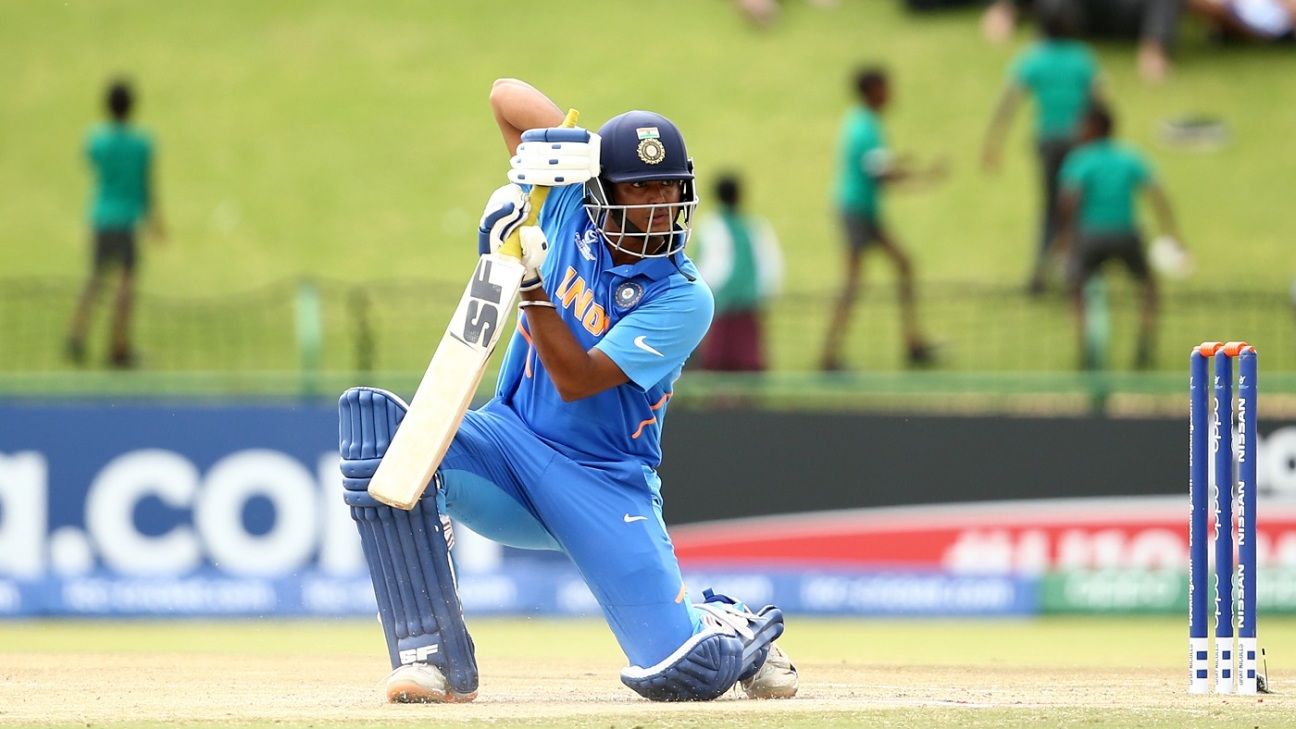
Entering the semi-final, Divyaansh Saxena had an average World Cup. Barring an unbeaten 52 against New Zealand in a rain-hit game, he had got starts but failed to make them big. That's not to say his innings haven't been attractive; they've just been too short.
However, in the semi-final against Pakistan, Saxena showed the temperament to not throw his wicket away till India hit the winning runs. His batting in their chase was measured and collected, letting his more enterprising partner Yashasvi Jaiswal hog the limelight, while he went about his business stroking six fours in his unbeaten 99-ball innings of 59.
ALSO READ: Jaiswal's coach and father-figure watches his hundred from the stands - in secret
Saxena's resolve to bat in this manner may have been the result of the knowledge gained while he was on the field. Saxena is India's mainstay near the square boundaries and, as it happens with India-Pakistan games, boundary riders have to listen to all that the crowd, which was supporting the opposition, had to tell them. This couldn't have been easy for a teenager, but Saxena didn't react. Not until he took a spectacular diving catch off Atharva Ankolekar's bowling to dismiss Mohammad Haris.
After completing the catch to remove the fifth Pakistan batsman, Saxena turned to the crowd behind him and put a finger to his lips. "Yes, it was a different feeling altogether today," he said after the match. "Before, there was no crowd in previous matches. Today the crowd was good, but there was more support to Pakistan. Whatever they were saying, it was normal, but the celebration was needed.
"I just try to ignore everything and focus on the ball. On the field also, the catch came and it changed the match eventually, so I have to be focused all the time on the ball, not the crowd."
Saxena's catch near the square-leg boundary not only shows his agility but also gives a glimpse into the mindset of the India Under-19 team. Against Australia in the quarter-final, India were defending a modest total of 233 but they won that game by a comfortable 74 runs. Saxena said that fielding in that match, too, was a major point of difference.
"[The] Fielding effort was really crucial today," Saxena said. "In the previous game, we saved 28 runs - we were informed about that in the team meeting after the Australia win. We were shown videos of it in our meetings. Today also, we gave a decent effort."
As for his batting performance, Saxena said that a target of 173 was delicate, especially since the weather was overcast when India began their chase. He confessed battling a difficult period in the middle overs, but consultation with his batting partner helped him pull through.
"The target of 173 is tricky because you don't want to lose early wickets," Saxena said. "We thought if you leave the ball initially, it's fine. They were coming hard at us, so we had to respect that early. After the 10th over, we got the better of them. In the middle, I was struggling a little but I spoke to Yashasvi and he guided me."
India, unbeaten through the tournament, now have four days off before they play the final on January 9. They had a seven-day gap between their quarter-final and semi-final, which they utilised to holiday at Kruger National Park, in the north-east of South Africa. Saxena said that it was crucial "to switch off mentally" during long tours and that the trip had "refreshed the team" before the semi-final.
This time though, the break will not be used for a holiday. They will be observing the second semi-final between Bangladesh and New Zealand on Thursday. And once they know who their opponents are for Sunday's clash, there might even be a sleepless night or two.















 Phone: (800) 737. 6040
Phone: (800) 737. 6040 Fax: (800) 825 5558
Fax: (800) 825 5558 Website:
Website:  Email:
Email: 






